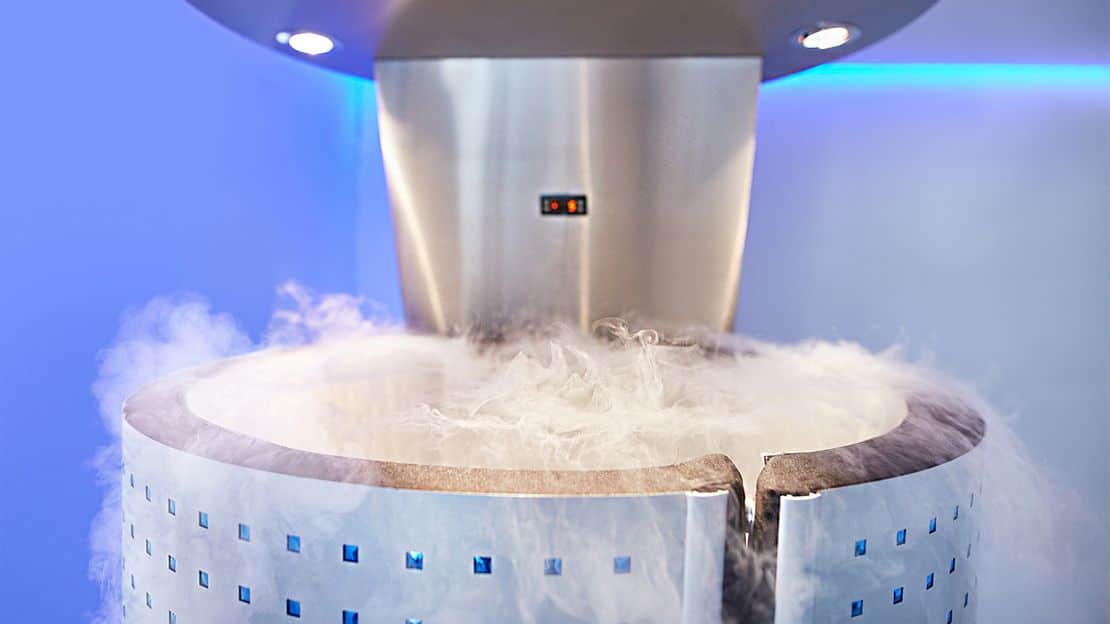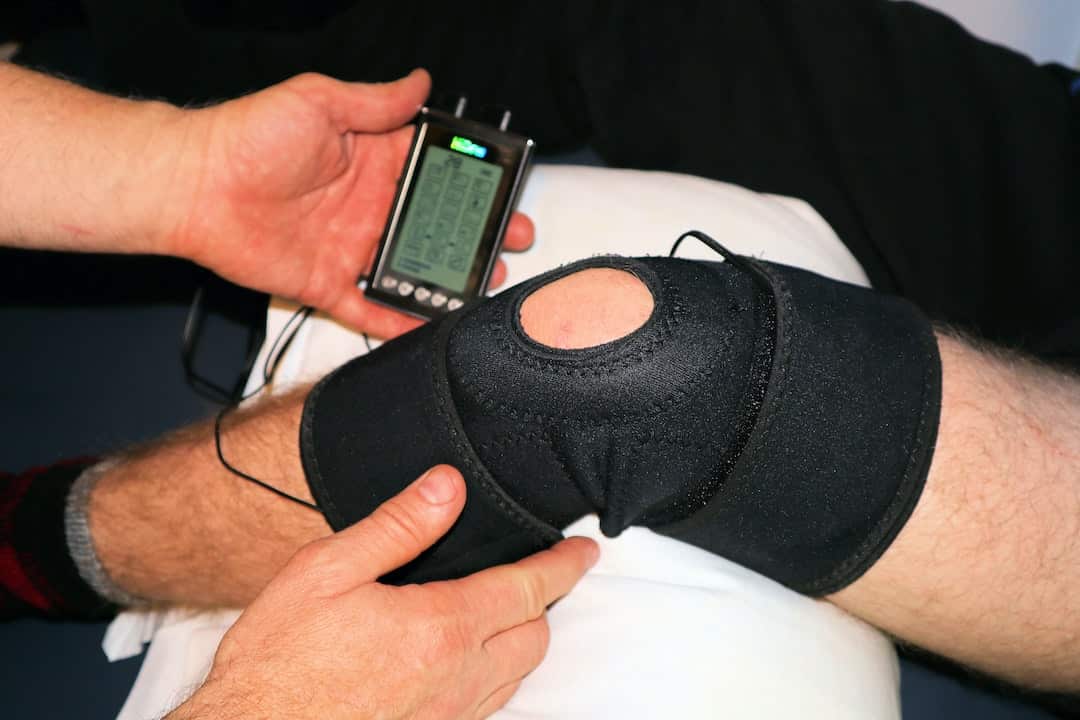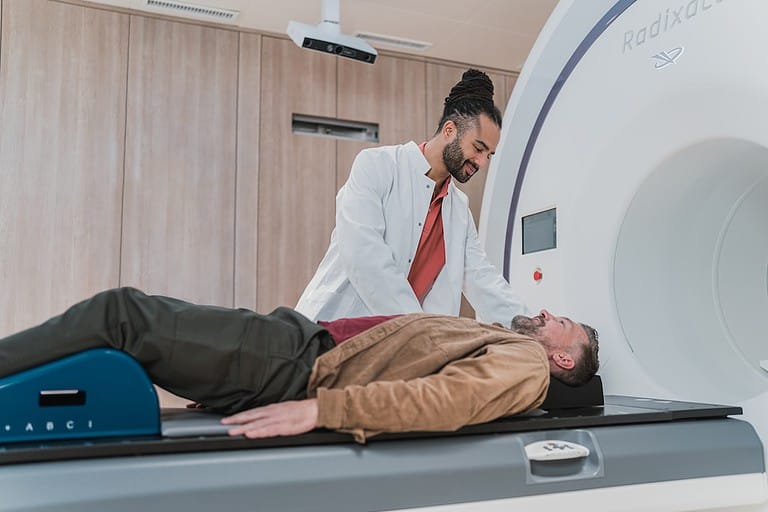Can Cryotherapy Help Arthritis? Your Guide to Relief
According to the CDC, 58.5 million Americans suffer from arthritis — that’s 24% of all adults. While there are pills and physical therapy available, many people are still looking for alternatives to arthritis pain relief. One popular option is cold therapy – but can cryotherapy help arthritis pain?
Cryotherapy involves exposing the body to freezing temperatures for the purpose of reducing muscle and joint inflammation — which are symptoms of arthritis. To find out how can cryotherapy help arthritis symptoms, let’s look at how whole-body cryotherapy works, who can benefit from cold therapy, and what to expect from a session of cryotherapy pain management treatment.
Table of Contents
What is Cryotherapy?
Cryotherapy is the practice of exposing the skin to frigid temperatures to address a variety of illnesses. Although it has been around for centuries, only recently have its potential advantages been scientifically investigated.
Cryotherapy relieves pain by applying ice packs to specific areas of the body or walking into a cryotherapy chamber filled with liquid nitrogen. The goal is to reduce inflammation and pain while stimulating healing processes within the body’s cells.
Among the purported benefits of cryotherapy are:
- Mitigating muscle soreness post-workout.
- Enhancing skin health.
- Reducing stress and tension.
- Relieving joint pain resulting from arthritis or other chronic ailments.
- Boosting immunity levels through increased metabolic rates.
- Promoting endorphin release to improve mood.
Whole-body cryotherapy is a natural treatment option for many medical conditions, including arthritis. By understanding how can cryotherapy help with arthritis relief, you can determine if this remedy can help ease your symptoms.
What is Arthritis?
Arthritis is a condition that affects the joints and causes inflammation, pain, and stiffness. Cryotherapy may be a possible option for arthritic pain relief with its ability to reduce swelling and enhance joint flexibility.
Types of Arthritis
Arthritis is an umbrella term that covers more than a hundred distinct ailments that cause joint soreness, rigidity, and impaired mobility. The most common types of arthritis are:
- Osteoarthritis (OA): a degenerative joint disorder resulting from cartilage wear and tear.
- Rheumatoid arthritis (RA): an autoimmune ailment in which the immune system attacks healthy tissue.
- Psoriatic arthritis (PsA): skin cells attacking joint tissues.
- Gout: arthritis caused by uric acid buildup in the bloodstream.
- Lupus: arthritis associated with systemic lupus erythematosus (SLE).
- Septic or infectious arthritis stemming from bacterial infection.
- Fibromyalgia: arthritis linked to chronic widespread musculoskeletal pain syndrome.
Can Cryotherapy Help Arthritis?
The primary benefit of using cold therapy for arthritis is its ability to reduce pain associated with joint stiffness and swelling caused by this condition.
Additionally, regular ice baths have been found to improve mobility in some cases.
However, more research is needed before definitive conclusions can be made about its efficacy as a long-term treatment option for arthritis sufferers.
Types of Cryo Treatment for Arthritis
There are quite a few options for applying cold therapy treatment to arthritic joints.
First, you can put ice packs directly on the affected joint such as knees, elbows, or fingers.
Second, cryotherapy can freeze tissue near painful joints.
Third, you can take ice baths.
Lastly, you can book a session for whole-body cryotherapy where you stand for a few minutes inside a cryo chamber filled with extremely cold air.
In the next section, we will discuss who should consider cryotherapy sessions for osteoarthritis pain relief and alternatives for arthritis relief.
Key Takeaway: Cryotherapy has been acclaimed as a potential therapy for arthritis joint inflammation, with its capability to reduce swelling and ease pain. The process involves exposing the body to extremely cold temperatures in order to constrict blood vessels around affected areas, providing temporary numbing effects that can help improve joint flexibility.
Who Should Avoid Cryotherapy for Arthritis
People with certain medical conditions or those taking medications should not use cryotherapy as an arthritis treatment option without consulting their doctor first.
Those with severe Raynaud’s disease, high blood pressure, circulatory problems, or diabetes are at risk of complications from extreme cold temperatures and should avoid cryotherapy treatments.
Individuals who are taking certain medications, like anticoagulants (blood thinners), could also have unfavorable results if they attempt cryotherapy.
If you are not sure whether or not you should try cryotherapy for arthritis pain management, it’s best to seek medical advice. Your doctor may be able to recommend alternative treatments that could work better for your particular condition.
Alternatives to Cryotherapy
If cryotherapy is not for you, here are other treatment options that can help relieve pain from inflammatory rheumatic diseases.
- Physical therapy exercises to strengthen muscles around affected joints.
- Lifestyle changes such as maintaining a healthy weight.
- Dietary modifications like avoiding inflammatory foods.
- Natural supplements such as fish oil.
- Heat therapy to reduce joint stiffness caused by arthritic inflammation.
- Acupuncture relieves joint pain in some forms of arthritis.
- Biofeedback training teaches individuals how to manage body responses linked with stress levels that can exacerbate symptoms of rheumatoid arthritis.
While there are potential benefits associated with using cryotherapy as an arthritic treatment option, these must be weighed against possible risks before trying cold therapy. Always consult your doctor before plunging into freezing temperatures.
 (Source)
(Source)
Getting Started With Cryotherapy
If you do decide to try cryotherapy, here are a few things to expect from your first session.
In whole-body cryotherapy, your body will be exposed to temperatures as low as -110°C to -140°C inside cryotherapy chambers or ice baths.
In localized cryotherapy, only the parts of your body with arthritis are treated with ice massage or crushed ice.
Before entering a cryo chamber, remove any metal objects such as jewelry that could become very cold quickly when exposed to extremely low temperatures.
Follow all safety protocols provided by the facility to prevent possible side effects such as frostbite, burns, eye injury, or hypothermia.
Sessions may be of variable length, typically ranging from one to three minutes. You can do cryo multiple times a week over the course of several weeks until you have achieved your desired results.
Conclusion
So, can cryotherapy help arthritis symptoms?
Cryotherapy is a safe and effective treatment option for those suffering from inflammatory rheumatic diseases. Localized cryotherapy may deliver pain relief for those with arthritis as it reduces soreness in joints.
Ultimately, whether or not cryotherapy can help your particular case of arthritis will depend on factors such as pain severity and individual response.
Take control of your health and well-being today by exploring the benefits of cryotherapy for treating arthritis. Learn more about this innovative approach to pain management and improving mobility with Smart Living Now’s no-fluff wellness resources!







